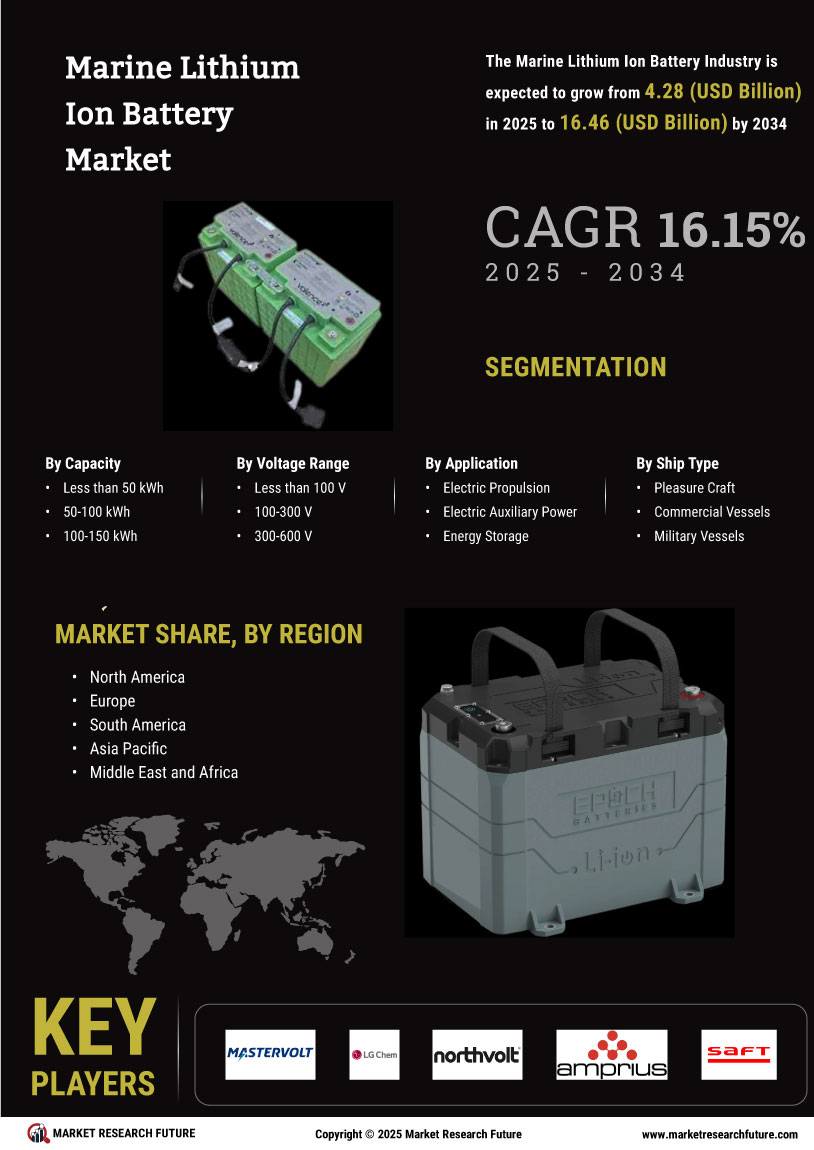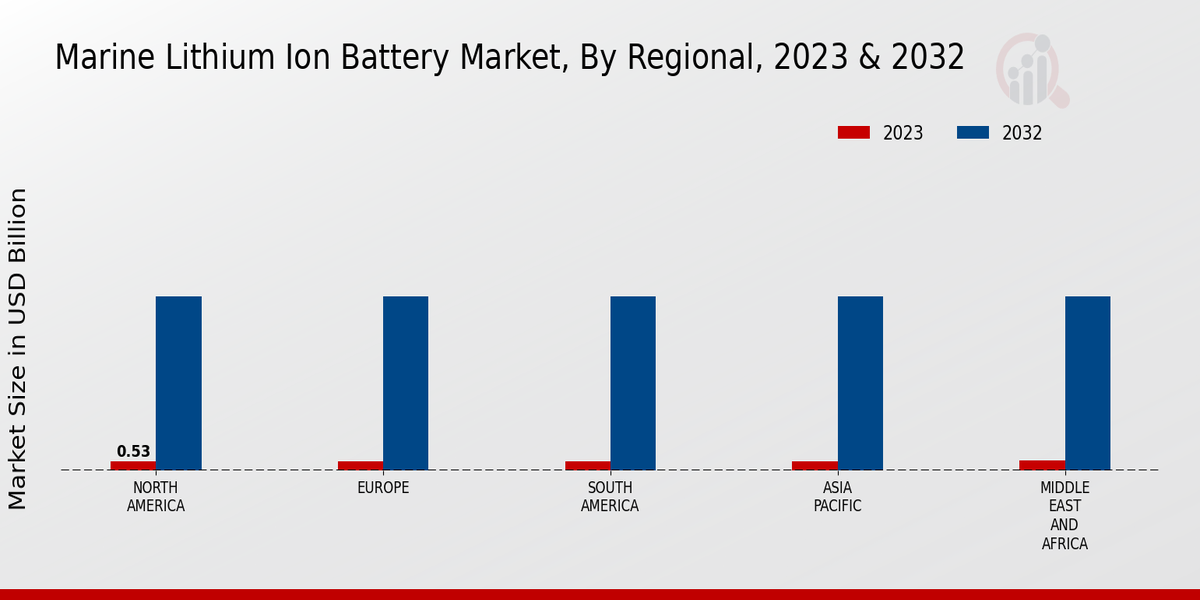Market Growth Projections
Growing Demand for Sustainable Energy Solutions
The Global Marine Lithium Ion Battery Market Industry is witnessing a surge in demand for sustainable energy solutions, driven by an increasing emphasis on reducing carbon emissions in maritime operations. As the global shipping industry seeks to comply with stricter environmental regulations, the adoption of lithium-ion batteries is becoming more prevalent. These batteries offer a cleaner alternative to traditional fossil fuels, aligning with global sustainability goals. For instance, the International Maritime Organization has set ambitious targets for reducing greenhouse gas emissions, which is likely to propel the market forward. By 2024, the market is projected to reach 3.68 USD Billion, reflecting this growing trend.
Regulatory Support for Clean Energy Initiatives
Regulatory support is a crucial driver for the Global Marine Lithium Ion Battery Market Industry, as governments worldwide implement policies to promote clean energy initiatives. These regulations often include incentives for adopting low-emission technologies and penalties for high-emission practices. The European Union, for instance, has introduced stringent regulations aimed at reducing emissions from maritime transport, which encourages the adoption of lithium-ion batteries. Such regulatory frameworks are likely to accelerate the transition towards cleaner energy solutions in the marine sector, fostering growth in the battery market. This supportive environment is expected to contribute to the market's expansion in the coming years.
Technological Advancements in Battery Efficiency
Technological advancements play a pivotal role in the Global Marine Lithium Ion Battery Market Industry, as innovations in battery chemistry and design enhance performance and efficiency. Recent developments in solid-state batteries and energy density improvements are indicative of this trend. These advancements not only extend the operational range of marine vessels but also reduce charging times, making lithium-ion batteries a more attractive option for ship operators. As a result, the market is expected to grow significantly, with projections indicating a rise to 19.1 USD Billion by 2035. This growth is likely to be fueled by ongoing research and development efforts aimed at optimizing battery technologies.
Increasing Investment in Electric and Hybrid Vessels
The Global Marine Lithium Ion Battery Market Industry is experiencing a notable increase in investment in electric and hybrid vessels. Shipbuilders and operators are increasingly recognizing the economic and environmental benefits of transitioning to electric propulsion systems. This shift is supported by government incentives and funding programs aimed at promoting cleaner technologies in the maritime sector. For example, several countries are investing in infrastructure to support electric vessels, which is likely to drive demand for lithium-ion batteries. The compound annual growth rate (CAGR) for the market is projected at 16.16% from 2025 to 2035, reflecting the growing interest in sustainable marine transportation.
Rising Awareness of Energy Efficiency in Maritime Operations
Rising awareness of energy efficiency in maritime operations is significantly influencing the Global Marine Lithium Ion Battery Market Industry. Ship operators are increasingly focused on optimizing fuel consumption and reducing operational costs, which lithium-ion batteries can facilitate. By integrating these batteries into their vessels, operators can achieve better energy management and lower fuel expenses. This trend is particularly relevant as shipping companies face pressure to improve their environmental footprint while maintaining profitability. The market's growth trajectory is likely to be bolstered by this heightened awareness, as more stakeholders recognize the advantages of adopting advanced battery technologies.
























